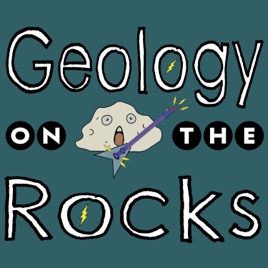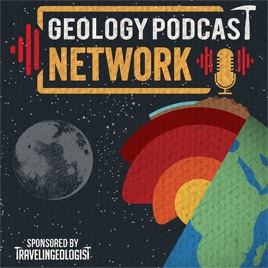
Advertise on podcast: Geology On The Rocks
Rating
4.8 from
Country
This podcast has
48 episodes
Language
Publisher
Explicit
No
Date created
2020/08/18
Average duration
83 min.
Release period
68 days
Description
James the Geologist and Bryan Baggins dive deeper into various geological topics with rock hammers in one hand and a whiskey on the rocks in the other. Grab a drink, take a seat, and enjoy the conversation with our hosts and esteemed guests. Stay cool, tune in, and keep it on the rocks! Support this podcast: https://podcasters.spotify.com/pod/show/geology-on-the-rocks/support
Podcast episodes
Check latest episodes from Geology On The Rocks podcast
Hoodoo and the Sh*tpots
2023/11/01
Back in action, the GOTR folks welcome the only one cannoli, the original paisano, Ken Lazara aka kentonics. We talk field oopsies and dive in a bit into Arizona geology and learn about a very aptly named volcano...you'll just have to listen to find out. We also discuss migmatites and how they fool geologists everywhere. Maybe we even discuss some Metallica disdain. Enjoy and Be cool, stay tuned, and keep it ON THE ROCKS.
---
Support this podcast: https://podcasters.spotify.com/pod/show/geology-on-the-rocks/support
more
Nikki Glaciers
2023/04/04
Episode 47
We dare you to say ‘Ice Aged Ice Sheets’ five times fast. But first, in this episode, the GotR Gang dive into all things Glaciers, brrrr. Glaciers and Glaciation, generally speaking, covers the formation, features, effects, and causes of glaciation events on Earth. Ice sheets and alpine glaciers are described, including their movement and erosional features and landforms. Glacial deposits will be examined, including a discussion of the features created by till and stratified drift. Other effects are worthy of discussion, including crustal subsidence and rebound, sea level changes,
alterations to streams and stream valleys, and the formation of proglacial and pluvial lakes. However, there is not enough time in one episode to bring you all the fun facts about glaciers. Remember, if you fall down a crevasse, the
good news is you will only fall 50 meters. The bad news is that you will fall 50 meters. Between the bars of our main discussion, we present to you another Mineral Minute, then close things out with special guest Joe Guzman of Space Poets to promote his Psychedelic Panther Music Fest during this week’s That Freaking Rocks!
Until next time remember to…
Be Cool, Stay Tuned, & Keep It On The Rocks
---
Support this podcast: https://podcasters.spotify.com/pod/show/geology-on-the-rocks/support
more
Lake Ballz
2023/03/16
Episode 46!
Welcome to Season 5 of Geology on the Rocks! We have special guest Geoarcheologis Dr. David Rachal in this episode to discuss all things balls. Through his research, Dave uses his balls of choice, Ruppia cirrhosa (Ruppia) seeds, to better constrain megafauna footprints in southern New Mexico along the ancient shorelines of the Paleolake Otero. He draws on both geological and archaeological data to support his research. His work infers a dynamic shoreline rather than the current models, which assume a more static landscape. The study suggests that this newer model could have broader implications for understanding human-megafauna interactions. So take a seat, cozy up with your favorite drink, and listen in as Dave offers a firsthand perspective on his amazing work. As always, between the bars of our main discussion, we present to you another mineral minute and close things out with a new That Freaking Rocks.
Until next time, remember to be cool, stay tuned, and keep it on the rocks!
Find Dr. Rachal’s work here: https://www.sciencedirect.com/science/article/pii/S2666033421000034
Cite his work, too!! (APA 7th edition citations below)
Rachal, D. M., Mead, J. I., Dello-Russo, R., & Cuba, M. T. (2022). Deep-water delivery model of Ruppia seeds to a nearshore/terrestrial setting and its chronological implications for Late Pleistocene footprints, Tularosa Basin, New Mexico. Geoarcheology, 37(6), 923–933.
---
Support this podcast: https://podcasters.spotify.com/pod/show/geology-on-the-rocks/support
more
Answers You Wanted Questioned!
2022/06/05
Episode 45
A season finale! This episode closes out season 4 with a dang bang! We finally get around to answering some of the questions we have received, such as jobs and career paths in the geosciences, what our favorite geologic structures are, identifying minerals in the field, types of rocks you might encounter in various depositional settings. Carly even shares with us a story about what happens when you give her a geology fact. Between the bars of our main discussion we present another mineral minute sponsored by the hydrated phosphouranlyte mineral, Dewindtite.
Until next season, stay tuned, be cool, and keep it on the rocks!
---
Support this podcast: https://podcasters.spotify.com/pod/show/geology-on-the-rocks/support
more
DANG! Environmental Ethics
2022/05/18
Episode 44!
DANG! What better start to an episode could you ask for as we begin our discussion discussing tornadoes and drunk pigs? Our main topic discusses some of the most common environmental problems we face today. What makes it difficult is the nature of the "problems" have changed: where such problems were once primarily scientific and technocratic in nature, they are now almost exclusively problems of politics. The future of the environment, at home and abroad, appears less certain than ever before even at a time when its potential to bring serious negative consequences for all humanity is more well-known than ever before. Problems that affect large groups and require collective action are recognized as some of the most perplexing political conundrums. Even outside the context of American politics, the environment presents challenges of a unique character. By their nature, environmental problems are ‘big’ problems that likewise affect ‘big’ groups of people and require ‘big’ solutions. Clean air cannot be achieved merely through the regulation of one industry in one part of the country, or through the passion of one highly motivated group or individuals. Between the bars of our main discussion, we present to you another mineral minute and before signing off we close things out with another That Freaking Rocks. Sprinkled throughout are tangents that we navigate in this environmental conscious and inclusive episode!
Until next time remember to stay tuned, be cool, and keep it on the rocks!
---
Support this podcast: https://podcasters.spotify.com/pod/show/geology-on-the-rocks/support
more
Sherock Holmes
2022/04/24
Episode 43
In this episode, GOTR takes the skeletons out of their closets and goes on a deep into all things forensic geologies, the mysterious interface between geology and forensics. While there was no exact date when scientific methods were first introduced to solving murders, there is no doubt geology had an early influence. Uniformitarianism is a concept that establishes a crucial link between geologists and forensic scientists, where the use of clues are used to work out a past sequence of events to determine what happened. We go through how a crime scene might be controlled for, and clues are handled. We then cover the various types of evidence forensic geologists might find helpful while finding tangential paths to travel down. Between the bars of our main discussion, we present to you another mineral minute, and on the back half, we close things out with a case full of drugs, government coverups, and murder! So grab your favorite whiskey or drink of your choosing and enjoy!
Whatever you do, remember to be cool, stay tuned, and keep it on the rocks!
---
Support this podcast: https://podcasters.spotify.com/pod/show/geology-on-the-rocks/support
more
Desserts & Wine
2022/02/20
Episode 42
This delicious episode explores the amazing world of desserts and wine! We sculpt the the auditory landscape by discussing such musings as climatic conditions that create desserts, geographic distribution of the Earth’s desserts, weathering, dunes, and surface morphologies. We do a little talk on each of our favorite deserts and wind are. We navigate how we can use desserts to explore our not so distant past and explore caves, karsts, coprolites, and wall etchings to see how the desserts we see today are not the desserts of the past. Between the bars of our main discussion we present to you another mineral minutes and instead of a that freaking rocks, we talk about dunes! Come join us and get just as lost in the tangents as we do! Some of our favorite characters make an appearance and we introduce to you a few new ones!!
Until next time be cool, stay tuned, and keep it on the rocks!
---
Support this podcast: https://podcasters.spotify.com/pod/show/geology-on-the-rocks/support
more
It's Morphin' Time
2022/02/04
Episode 41
It’s snowing down here in the Lone Star State, and geomorphology is the name of this episode’s game, which is fitting as there is a shift in the landscape here at Geology on the Rocks! Geomorphology, simply put, is just the study of Earth’s landforms and landform evolution. Traditionally, the subject has been studied qualitatively, which is the description of landforms, and quantitatively, which is process-based and aims to describe forces acting on Earth’s surface to produce landforms and landform change. And like every other branch of geology, many sub-disciplines within geomorphology include tectonic, fluvial, storm, aeolian, floodplain, glacial, groundwater, climate, tsunami, and many others. Geomorphologists interpret multiple forms of information from various sources to create a logical and rational argument that is appropriately supported by evidence.
But, of course, much of that is going to depend upon the experience and training of the person (or team) making the interpretations. Therefore, interpretation can be thought of as indeterminate of really not having a definite end result as many interpretations might be valid. Combinations of attributes, relationships, processes, drivers, legacy effects, and sequences of events can create these contingent circumstances that are a complex sequence of events in response to particular events. We go on to discuss what mental faculties it takes to make a less wrong interpretations, and on the back half, we apply those techniques. As always, between the bars of our main discussion, we present to you another mineral minute and close things out with a little friendly competition. Let us know who said it best!
Until next time remember to be cool, stay tuned, and keep it on the rocks!
---
Support this podcast: https://podcasters.spotify.com/pod/show/geology-on-the-rocks/support
more
The Life & Times of the Spiffy BIFs
2022/02/01
Episode 40
This episode is dedicated to all those who ever thought that banded iron formations were boring and basic as we here at GotR do a deep dive into these really Spiffy BIFs. We discuss such things as what are they? Where do they come from? Is there any geological significance? What do they tell us? Every time we think that we are going to just have a nice, easy topic, the more and more we read about it and reflect on our own assumptions, it turns out to be so dang complicated and could be several different things at the same time. But we do our best to be as thorough as possible while trying not to get lost in the weeds of this seemingly simple topic. Keep in mind that 1. geology and the history of Earth is a rather complex subject matter, and one should always proceed with caution when interpreting the precipitation mechanisms in BIFs. So take a seat, grab your rock hammers, and favorite whiskey with your favorite podcast duo, and come take an adventure into the wonderful world of BIFs with your favorite podcast!
Until next time remember to be cool, stay tuned, and keep it on the rocks!
---
Support this podcast: https://podcasters.spotify.com/pod/show/geology-on-the-rocks/support
more
No, Basalts!
2022/01/12
Episode 39
Hold on to your seats because if you love rocks, QAPF diagrams, or simply nerding out, this episode is for you as we take a deep dive into the magnificent world of basalts. Basalts are simply aphanitic extrusive igneous rocks formed from the rapid cooling of low-viscosity lavas rich in magnesium and iron exposed at or near the surface of rocky planets or moons. Nearly 90% of all volcanic rocks on Earth are basalt. From tholeiitic basalts to alkali basalts to mid-ocean ridge basalts to the basalts of Hawaii & Iceland, nothing is off-limits for us. We have fun facts galore, poems, a mineral minute, lots of giggles, and tangents sprinkled throughout. We then talk about Mr. Baggin’s trip to the Hawaiian Islands on the back half, followed by James the Geologist’s trip to the recording studio. Rock Opera may or may not be at 1:17:01, but you will just have to listen for yourself to find out.
Until next time be cool, stay tuned, and keep it on the rocks!
---
Support this podcast: https://podcasters.spotify.com/pod/show/geology-on-the-rocks/support
more
AMD - Dilution is the Solution
2022/01/04
Episode 38
It has been a crazy year, to say the least. To start 2022 off with a bang, we present to you a brand spanking new episode that was previously recorded covering the important topic of Acid Mine Drainage. But we first go over how ore deposits are emplaced and the types of ore typically mined. On the back half, we talk primarily about AMD's environmental concerns and the formation of contaminants. So join us as we nerd out with some mineralogy and save the planet one episode at a time.
Until next time remember to be cool, stay tuned, and keep it on the rocks.
---
Support this podcast: https://podcasters.spotify.com/pod/show/geology-on-the-rocks/support
more
The Blowing Cave
2021/10/16
Episode 37
After a crazy September, we are finally back back! This episode is a follow-up to the Speleology Special, and we dive a bit deeper into the fascinating world of caves. We begin our discussion with the controls of cave temperatures – latitude and altitude, among other variables. Fun fact, the temperatures at lower depths in caves can be regarded as “fossil” temperatures. An example of this is seen in the Pierre St. Martin Cave in France. This cave is measured to have a depth of 1,474 meters, and by doing a little bit of maths, temperatures near the bottom of the cave presumably reflect the average annual temperature of the region as it was nearly 40,000 years ago! Mind. Blown. We then focus on relative humidity, air currents, barometric changes, chimney & reverse-chimney effects that all lead to the blowing cave phenomenon. On the back half, we walk our way through how early cave scientists studied the breath of caves to help better understand the mysteries of the underground abyss. We then have a little discussion about the formation of caves in Texas and marvel at the epic names of the rooms get, using Natural Bridge Caverns as an example. As always, between the bars of our main discussion, we present to you another Mineral Minute, sponsored by Tyuyamunite, and we close things out with another That Freaking Rocks.
Until next time, we remind you to be cool, stay tuned, and keep it on the rocks!
---
Support this podcast: https://podcasters.spotify.com/pod/show/geology-on-the-rocks/support
more
Podcast reviews
Read Geology On The Rocks podcast reviews
M3ggoMy3ggo
2021/01/28
GOTR
My big bro and Brian are Very entertaining and educational! I enjoy listening to these episodes. I laugh along and gain knowledge in each episode. Kee...
more
VolcaoneOlivineQuartzGuy
2020/10/06
Killing it!
Theses guys are really interesting to listen to and help bring the complex goings ons in the geosciences and talks about them in a such a way that ma...
more
Podcast sponsorship advertising
Start advertising on Geology On The Rocks & sponsor relevant audience podcasts
You may also like these earth sciences Podcasts

4.9
31
65
What About Water? with Jay Famiglietti
Global Institute for Water Security

4.8
91
45
The SciManDan Podcast
SciManDan

5
10
71
Talk+Water
Texas+Water

4.6
45
189
Third Pod from the Sun
American Geophysical Union

3.7
41
29
Imagining Tomorrow
Emma Newman with Friends of the Earth

4.9
44
84
Geology Podcast Network
Unknown

5
2
22
SolarPunk Permaculture
Sam Betteridge

4.7
180
115
Crazy Town
Post Carbon Institute: Sustainability, Climate, Collapse, and Dark Humor

5
4
32
PFAS Pulse Podcast
HRP Associates Inc.

4.8
79
194
The Wandering Naturalist
Three Rivers Park District



